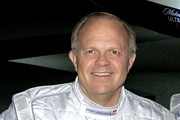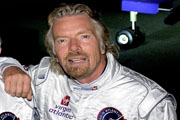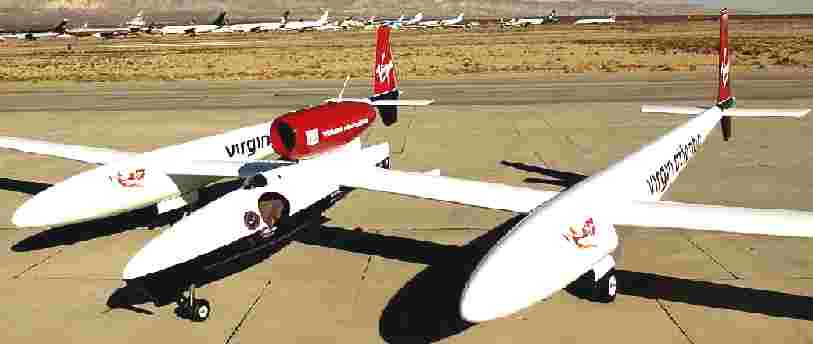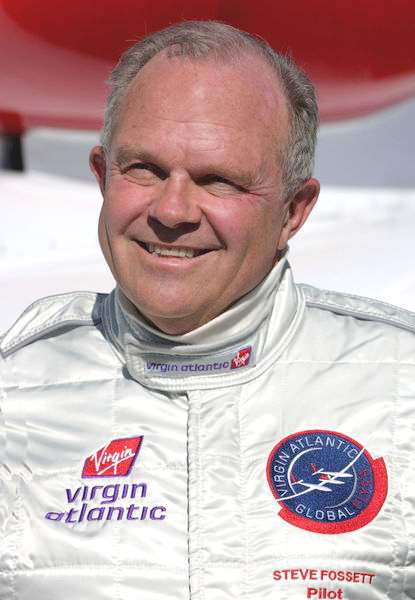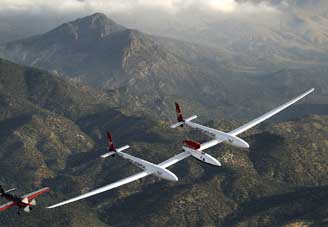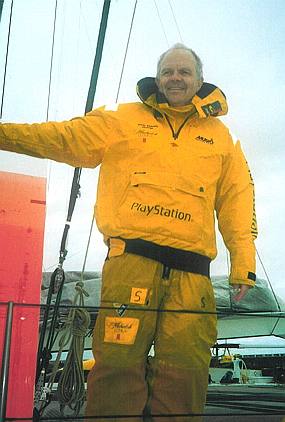|
VIRGIN ATLANTIC GLOBAL FLYER
|
|
HOME | BIOLOGY | FILMS | GEOGRAPHY | HISTORY | INDEX | INVESTORS | MUSIC | NEWS | SOLAR BOATS | SPORT |
|
AROUND THE WORLD IN 80 HOURS For the Virgin Atlantic GlobalFlyer and its pilots Sir Richard Branson or Steve Fossett to set a world record for the first solo, non-stop, non-refuelled circumnavigation of the world they will have to follow a strict set of rules laid down by the governing body of aviation record attempts, the Federation Aeronautique Internationale.
Steve Fossett Sir Richard Branson
The FAI's rules state that a record attempt like this must start and finish at the same airfield and cross all meridians of the globe. What's more the course must not be less than the very precise figure of 36,787.559 kilometres (around 23,000 miles) which is equal in length to the Tropic of Cancer. To allow the Virgin Atlantic GlobalFlyer to catch the vital jet stream winds, the FAI rules don't oblige that record attempts follow the imaginary line of the Tropic itself but simply that the distance flown exceeds it.
That doesn't mean, however, that Steve Fossett could fly across the Poles. The course must also be kept away from the North and South "Frigid Zones", defined as being at latitudes of over 66degrees 33minutes.
With the Virgin Atlantic GlobalFlyer capable of speeds of over 250 knots (285mph) the flight should be completed inside 80 hours. The route will begin from an airfield in mid-Western United States and will then follow the jet stream winds across the Atlantic to the UK. From there Steve will head south-east across the Mediterranean and the Gulf before turning east towards Pakistan, India, China and Japan. The final leg of the journey will take the plane out over the Pacific towards Hawaii before crossing the west coast of the US and returning to its launch site.
In the course of the epic journey Steve should fly over or near the following major cities: Montreal, London, Paris, Rome, Cairo, Bahrain, Karachi, Calcutta, Shanghai, Tokyo, Honolulu and Los Angeles. He will also cross major flight routes, meaning that keen-eyed passengers on commercial airliners may be able to spot the Virgin Atlantic GlobalFlyer as it flies several miles above them at around 45,000 feet.
Virgin Atlantic Global Flyer
The Virgin Atlantic GlobalFlyer looks like no other plane because it is designed to do what no other plane can. Engineered by Scaled Composites, the company that built Richard's balloon gondolas in the past, the aircraft's unique twin-boom fuselage and wide, graceful wingspan have been created so that the plane can hold fuel equivalent to nearly five times its own weight - enough to ensure that it can make it round the world without stopping.
Throughout the wings and fuselage there are 17 fuel tanks which are connected via a series of pumps to feed the single Williams FJ44-3 ATW jet engine that powers the aircraft at speeds close to 300mph yet, thanks to the latest in fuel efficiency technology, uses less fuel per mile than an off-road 4x4. At the start of the flight the plane will weigh 22,006lb. Less than 80 hours and 23,000 miles later, it will have shed 18,000lb to land at its dry weight of a little under 4000lb.
That incredible change in weight has a major influence on the way the 114-foot long wing is designed. Built as one single piece from the most modern lightweight composite materials available, the wings will sag towards the ground under the weight the fuel when the plane is standing still. But as the Virgin Atlantic GlobalFlyer takes to the air, the aerodynamic lift generated at speed will cause them to deflect upwards like the wings of a bird. Gradually, as the fuel is burned off, the wings will flatten to a more conventional shape.
From the cockpit the pilot will be busy ensuring the delicate plane remains stable as it rides the fast jet stream winds that it must cruise in if it is to complete its flight. The aircraft is expected to travel at around 45,000ft but can climb as high as 52,000ft if the conditions require it - that's over three miles higher than the average cruising altitude of a commercial airliner.
An autopilot system will be used to give the pilot time to feed and communicate with mission control and his chair will even recline when short periods of relaxation are required.
LIFT OFF
As the sun set over Salina, 8000 people watched from the side of the runway as Steve Fossett and the Virgin Atlantic GlobalFlyer successfully took off into the air.
After more than a month of unavoidable delays, excitement was at its peak as crowds assembled in the biting cold, gathered around portable radios and sitting with friends and family. 27 privately piloted aircrafts flew in especially for the event, and traffic built up all around the area.
Some spectators had arrived especially early to make sure they gained a good view of the aircraft. Rick and Robin Chester, parents of selected aviation K-State student Monica Chester, arrived at the runway at 14:30, waiting more than four hours for the event. "We were really happy that we waited," they said. "We were freezing but it was well worth the wait."
Saying that an earlier take off would have been more preferable, Richard said that because of the strong jet-streams Steve was quite happy to wait. The head winds also needed to get down to 10mph and they did not do so until ten minutes before take-off, making it "perfect conditions" for flying.
Leaving at 18:47 CST, it was a smooth take-off except for a moment when the aircraft dipped dramatically towards the runway. "When it dipped we were a little bit nervous," Sir Richard Branson said afterwards, although Jon Karkow said it was not an unusual procedure during a climb.
After take-off Kevin Stass, Mission Control director, said: "Everyone at Mission Control is really pleased that the Virgin Atlantic Globalflyer had successful accomplished take-off." Richard said it was "an enormous relief to see it lifting off because it had never flown before with such a load of fuel on board." Saying that the aircraft's take-off was a "beautiful sight", Richard said that having left Salina, its "next stop Salina. Something I never thought I'd be able to say with a plane!"
Trois jours pour boucler un tour du monde
GlobalFlyer lors d’un vol d’essai en 2004.
GLOBAL FLYER LINKS:
Home Latest News About the Attempt About the Aircraft Steve Fossett Sir Richard Branson
About the Aircraft Steve Fossett Biography Richard Branson Biography Virgin Atlantic
Kansas start for Virgin attempt 06 Dec 04 | Science/Nature SpaceShipOne rockets to success 04 Oct 04 | Science/Nature Burt Rutan: Aviation pioneer 04 Oct 04 | Science/Nature Hopes soar for solo record plane 14 Aug 04 | Science/Nature Testing begins for global plane 12 Mar 04 | Science/Nature Wraps come off solo record plane 08 Jan 04 | Science/Nature
Solar Cola drinkers care about climate chaos ......
....... Pioneering research for the Planet
(330ml and 250ml alu cans 500ml PET bottle)
|
|
This
website
is Copyright © 1999 & 2007 NJK. The bird |
|
AUTOMOTIVE | BLUEBIRD | ELECTRIC CARS | ELECTRIC CYCLES | SOLAR CARS |
